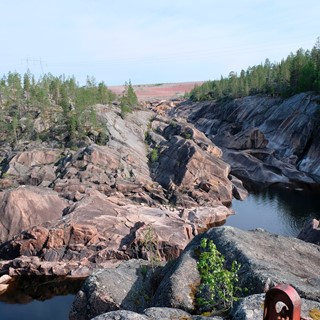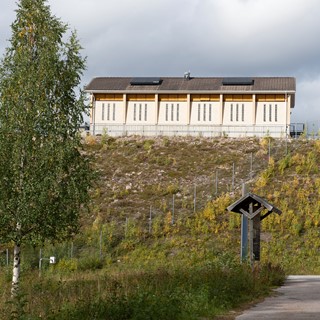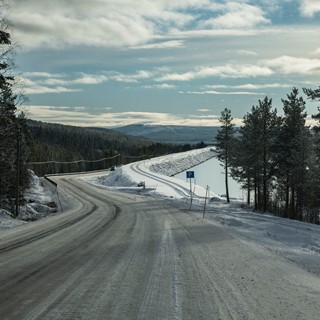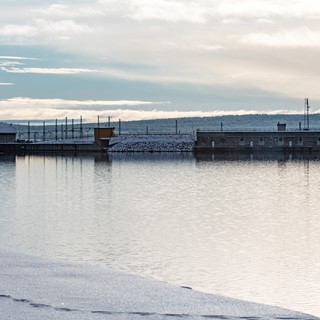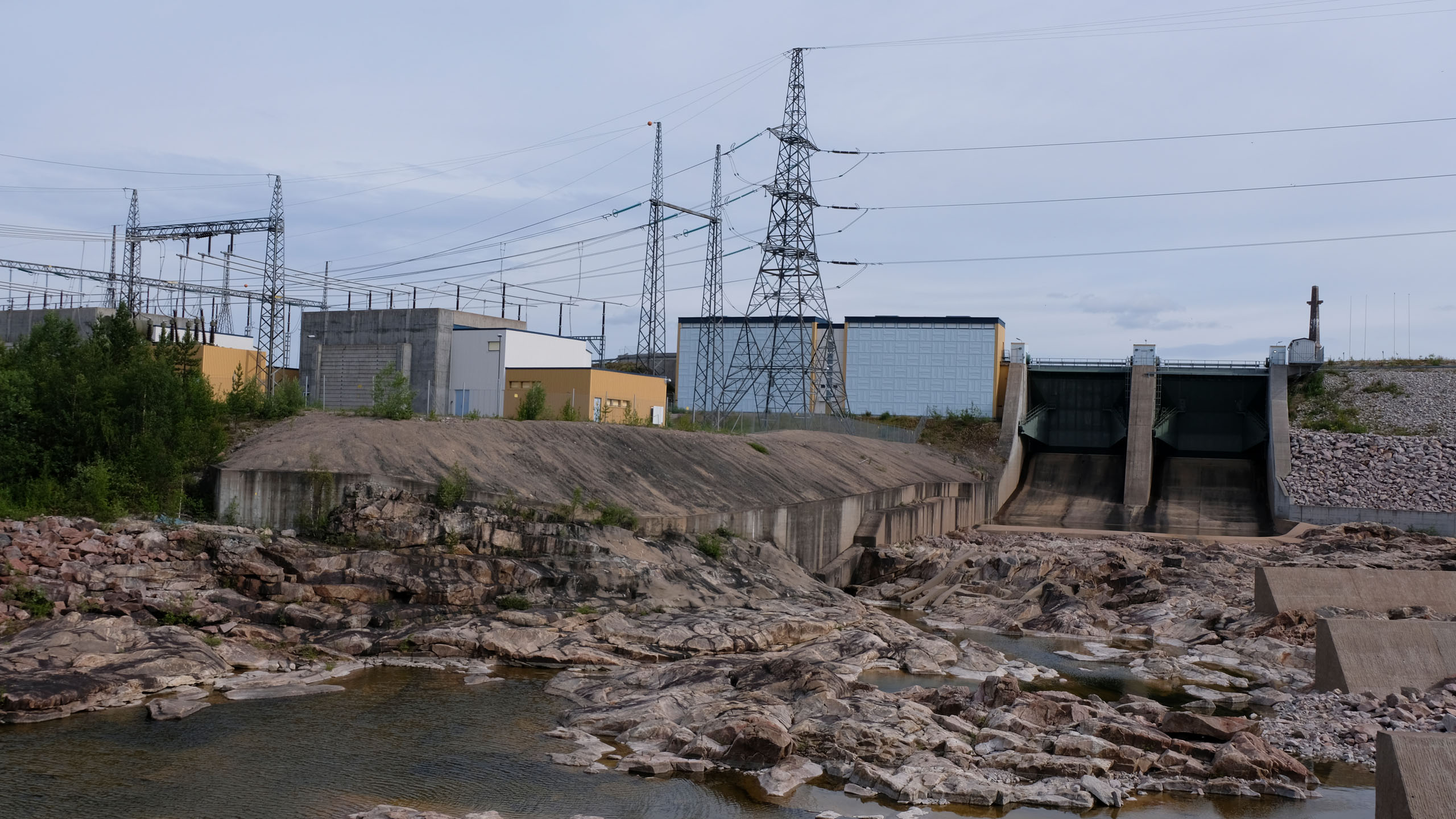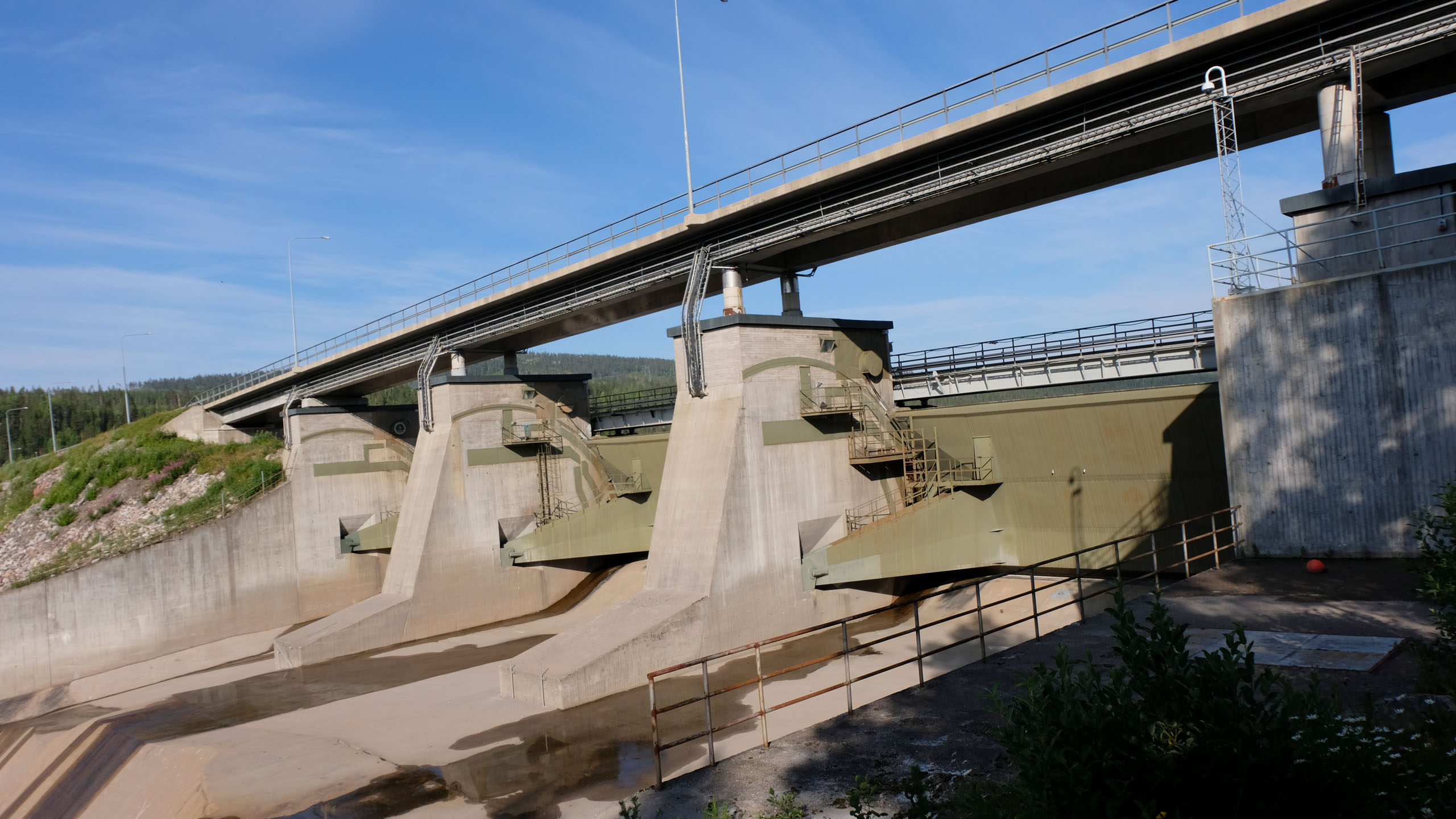History
Before the power plant, Harsprånget was one of Sweden’s national waterfalls, just like Stora Sjöfallet and Tennforsen. Harsprånget was first mentioned in 1673, in a description of Lappland by Johannes Schefferus. He describes Harsprånget as being located along the River Lule Älv; ‘The water squeezes between two mountains that are so close that a hare could jump across in one leap’ – thus the name Harsprånget (hare’s leap), which became the accepted name for those who studied and visited the site.
The suggestion to use Harsprånget’s hydropower came as early as 1907, when Albert Bergström proposed to parliament that an ironworks, owned by the state, be constructed there. The ironworks would contribute with materials for the inland railway, torpedoes and submarines, which up until that point had mainly been imported. Bergström’s proposal was turned down, however, as the state was not to compete with individual businesses. The tune had changed less than a decade later, however, and in 1918, the Government proposed construction of a power plant in Harsprånget.
The proposal from the Government was based on a dearth of important import goods, resulting from the First World War. Sweden lacked electricity, and the winter of 1917 had been extremely cold. It was necessary to expand hydropower in the country as ‘the white coal would light the homes, provide industry and trains with power, and reduce our expensive dependence on foreign energy.’
Construction at Harsprånget began in 1919, but was halted three years later due to a lack of industry establishments. Vattenfall’s economists had worked out that construction required a lot more money than previously thought.
In the 1940s, a new power transfer technique became popular, which led to a boom for Swedish hydropower. Various parties competed to resume construction at Harsprånget, with little success. The Government said that the power from Porjus was enough. After extensive negotiations, however, the Government decided to award Vattenfall 1.8 million SEK to build Harsprånget’s power plant in 1945. The construction would consist of three power generation units with room for a fourth. It was estimated that construction would cost 79.5 million SEK, and take eight years. The new power station was not placed in the same spot as the old one that had been initiated in 1919, however, but two kilometres downstream, which meant that the subterranean excavation efforts from the early 20th century were useless. The new drainage tunnel that was built for the power plant in Harsprånget was to have dimensions that surpassed the Stockholm underground, and the dam was the biggest in the world.
At the beginning of the 1950s, Harsprånget’s power plant was opened, with a power output of 330 MW. It was to provide 10 % of the electricity used in Sweden, which, at the time, was 20 TWh (now 141 TWh). In addition to the opening of the country’s biggest hydropower plant, another leap in international power history was taken. It was the so-called Harsprångsledningen line that had been built between Harsprånget and Hallsberg, a stretch of nearly 1,000 kilometres. ASEA and Vattenfall had worked out a new system that made it possible to transport large amounts of electricity over long distances, without great losses. The power plant had cost almost 123 million SEK to build, and the Harsprångsledningen line 147 million SEK – a total of 270 million SEK. Each Swedish citizen had thus contributed almost 39 SEK, equivalent to 720 SEK in 2018. Harsprånget is Sweden’s biggest power plant in terms of power output, and it was completed at a time when Sweden faced electricity rationing. With help from the power plant, the country took the step into the age of prosperity.
The machine room is subterranean, and the visible proof of Sweden’s biggest hydropower plant is the dam, the outdoor switchgear, and a grey reloading hall designed by architect Sven Malm. The reloading hall includes an angled office block, and a tastefully furnished and decorated reception hall with an impressive entrance. Sculptor Gustav Sandberg was responsible for the decoration of the reception hall.
At most, 1,200 people worked at Harsprånget’s power plant, and Norrbotten’s ironworks also opened during construction, which meant that competition for labour was strong. This resulted in Sweden’s biggest power plant construction being staffed mainly by new, more or less untested managers with technical education. Considering the jobs were offered so far north, Vattenfall had to adjust its wage policy upwards, and offer family homes to married, qualified managers.
When it came to the erection of a village at Harsprånget, Vattenfall wanted to avoid mistakes made in Porjus, where a slum had appeared on the outskirts of the land owned by Vattenfall. To avoid primitive buildings, ‘Egnahem’ buildings were allowed, following permission from the management, within a designated area. A plan was established with a designated location for a church, a municipality house, and a park. Wells were dug, water and sewage pipes were installed. To achieve homogeneity, the employees were given the opportunity to rent plots, and management provided construction blueprints of different standards. The workers could buy building materials from Vattenfall on credit, and the homes were to be heated by surplus electricity from Porjus.
The site was divided into a temporary and a permanent village. The temporary village consisted of around 150 houses, of which 80 were ‘Egnahem,’ and the permanent village comprised around 15 houses. These were to become homes for workshop and maintenance staff, but while construction was ongoing, office staff lived there. Altogether, the Harsprånget village consisted of close to 200 buildings.
The village at Harsprånget went from being desolate to a completely electrified village. Electrical heating was installed in all houses, and many apartments had electric hobs. The bachelors’ temporary homes were heated with direct-acting electricity, and all homes were provided with water and sewage, which was unique for construction villages at the time. The houses were ready to be assembled, and were to be disassembled when the power plant was complete.
Images
All pictures below are part of the power plant's history. All images are copyrighted. You may use the images for personal use but the images may not be used in commercial contexts or printed matter without our permission. Click on the pictures to enlarge them.
Stories
Here you can read other people's stories about the power plant. And if you have your own story, please share it. Whether you want it to be published on the site or not, we are interested in all stories.
Do you have a story about the powerplant or life around the river?
Send us your story
Visitor information
Below you can read about everything you need to know before a possible visit to the power plant. When it is best to visit the power plant, how to find here and about the rules that apply in the area.

